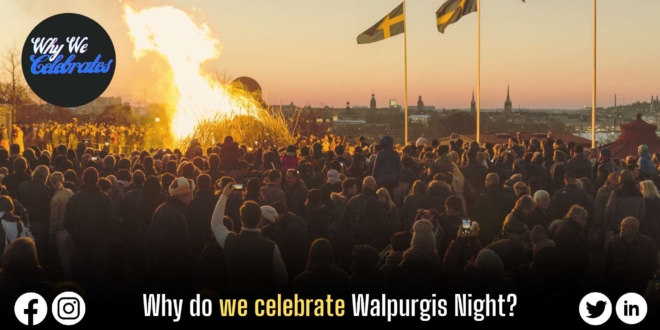In the mystical realms of Northern Europe and Scandinavia, a fascinating pagan festival takes center stage on April 30th each year – Walpurgis Night, also known as ‘Walpurgisnacht’ and ‘Night of the Witches.’ In this enchanting celebration, people gather to light bonfires, sing along to Celtic folk music, and engage in age-old rituals to welcome the arrival of spring and protect against malevolent forces.
The Origins of Walpurgis Night:
The roots of this intriguing tradition trace back to pagan celebrations of fertility rites and the onset of spring. A key figure in the festivities is Saint Walpurga, an English-born nun who ventured to Germany in the 8th century for missionary work under her uncle, Saint Boniface. Saint Walpurga is renowned for her purported ability to ward off pests, illnesses, and witchcraft, leading to her association with May 1st, the day she was canonized in 870 AD.
Local Variants and Celebrations:
Walpurgis Night is not confined to a specific region; it’s observed throughout Northern and Central Europe, including the Netherlands, Germany, the Czech Republic, Sweden, Finland, Estonia, and Austria. Each locale adds its unique flavor to the festivities, creating a tapestry of diverse traditions.
How to Celebrate Walpurgis Night: 7 Time-Honored Traditions:
1. Bonfires, Fireworks, and Clamor:
The heart of Walpurgis Night lies in the roaring flames of bonfires. These towering pyres, set atop the highest hills, have been a tradition for centuries, designed to scare off spirits. The night echoes with music, singing, and the explosive sounds of fireworks, creating a jubilant atmosphere.
2. Drink Up!:
In the spirit of merriment, heavy drinking is customary on April 30th. The traditional drink of Walpurgis Night is mead, a delicious honey wine. Maibowle, an aromatic wine punch, adds a refreshing touch to celebrations in Germany.
3. Read These Unsettling Stories and Poems:
Delve into the eerie side of Walpurgis Night with literature. From Goethe’s “Faust, Part I” to Stoker’s “Dracula’s Guest,” immerse yourself in tales of witchcraft and wizardry.
4. Listen to Atmospheric, Classical Songs:
Set the mystical tone with classical compositions like Camille Saint-Saens’ “Danse Macabre” and Hector Berlioz’s “Witches’ Sabbath.” Create your playlist for a bewitching ambiance.
5. The Hanging of the Greens:
Deck your halls with blooming springtime foliage. Flowers, shrubbery, and freshly leafing oak boughs, when blessed, are believed to keep evil spirits at bay. Embrace the tradition of adorning your surroundings with these protective greens.
6. Ward Off the Roaming Devil-Dogs:
Ensure a year of good health, good weather, and a bountiful harvest by leaving Ankenschnitt (buttered bread with honey) for the devil dogs. This age-old custom aims to keep these mythical creatures happy and away from your doorstep.
7. Be With People, Have Fun, and Get Loud:
Walpurgis Night is a community celebration, an ode to human fellowship. Gather with friends, play music, enjoy each other’s company, and make a joyful noise to ward off the misanthropic forces.
Walpurgis Night, with its bonfires, music, and age-old traditions, is a celebration of life, community, and the triumph of light over darkness. As April 30th approaches, join the revelry and immerse yourself in the enchanting world of Walpurgis Night.
Walpurgis Night Around the World
Nordic Traditions
- Sweden: Known as “Valborg,” Swedes light bonfires to ward off evil spirits. It’s a festive way to bid farewell to winter and welcome spring.
- Finland: Walpurgis Night, or “Vappu,” involves sparkling wine, parties, and celebrations. The upper class initially embraced it, but students later popularized the tradition.
FAQS
When is Walpurgis and May Day in Sweden?
Well, Walpurgis Eve falls on April 30th, and May Day follows on May 1st.
Who can celebrate Walpurgis?
Well, everyone really—family, friends, and lovebirds alike. It’s simply a great excuse to gather around a bonfire, share some songs, and soak in the joy of summer approaching.
How to do it like a local?
Just join in the singing or humming and bask in the general happiness that comes with knowing summer is just around the corner.
What to do on May Day?
As for May Day, it’s been a public holiday in Sweden since 1939. Many folks spend the day participating in demonstrations advocating for workers’ rights.






